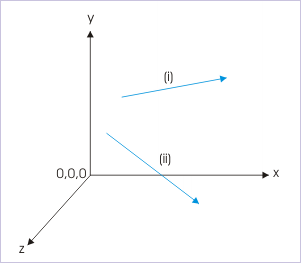| << Chapter < Page | Chapter >> Page > |
Acceleration and deceleration are terms which are generally considered to have opposite meaning. However, there is difference between literal and scientific meanings of these terms. In literal sense, acceleration is considered to describe an increase or positive change of speed or velocity. On the other hand, deceleration is considered to describe a decrease or negative change of speed or velocity. Both these descriptions are incorrect in physics. We need to form accurate and exact meaning of these two terms. In this module, we shall explore these terms in the context of general properties of vector and scalar quantities.
A total of six (6) attributes viz time, distance, displacement, speed, velocity and acceleration are used to describe motion. Three of these namely time, distance and speed are scalar quantities, whereas the remaining three attributes namely displacement, velocity and acceleration are vectors. Interpretations of these two groups are different with respect to (ii) negative and positive sign and (i) sense of increase and decrease. Further these interpretations are also affected by whether we consider these terms in one or two/three dimensional motion.
The meaning of scalar quantities is more and less clear. The scalar attributes have only magnitude and no sense of direction. The attributes “distance” and “speed” are positive quantities. There is no possibility of negative values for these two quantities. In general, time is also positive. However, it can be assigned negative value to represent a time instant that occurs before the start of observation. For this reason, it is entirely possible that we may get negative time as solution of kinematics consideration.
A vector like acceleration may be directed in any direction in three dimensional space, which is defined by the reference coordinate system. Now, why should we call vector (as shown in the figure below) represented by line (i) positive and that by line (ii) negative? What is the qualification for a vector being positive or negative? There is none. Hence, in pure mathematical sense, a negative vector can not be identified by itself.
Vector representation in three dimensional reference

In terms of component vectors, let us represent two accelerations and as :
Why should we call one of the above vectors as positive and other as negative acceleration? Which sign should be considered to identify a positive or negative vector? Further, the negative of expressed in component form is another vector given by :
So, what is the actual position? The concept of negative vector is essentially a relative concept. If we represent a vector A as shown in the figure below, then negative to this vector – A is just another vector, which is directed in the opposite direction to that of vector A and has equal magnitude as that of A .

Notification Switch
Would you like to follow the 'Physics for k-12' conversation and receive update notifications?